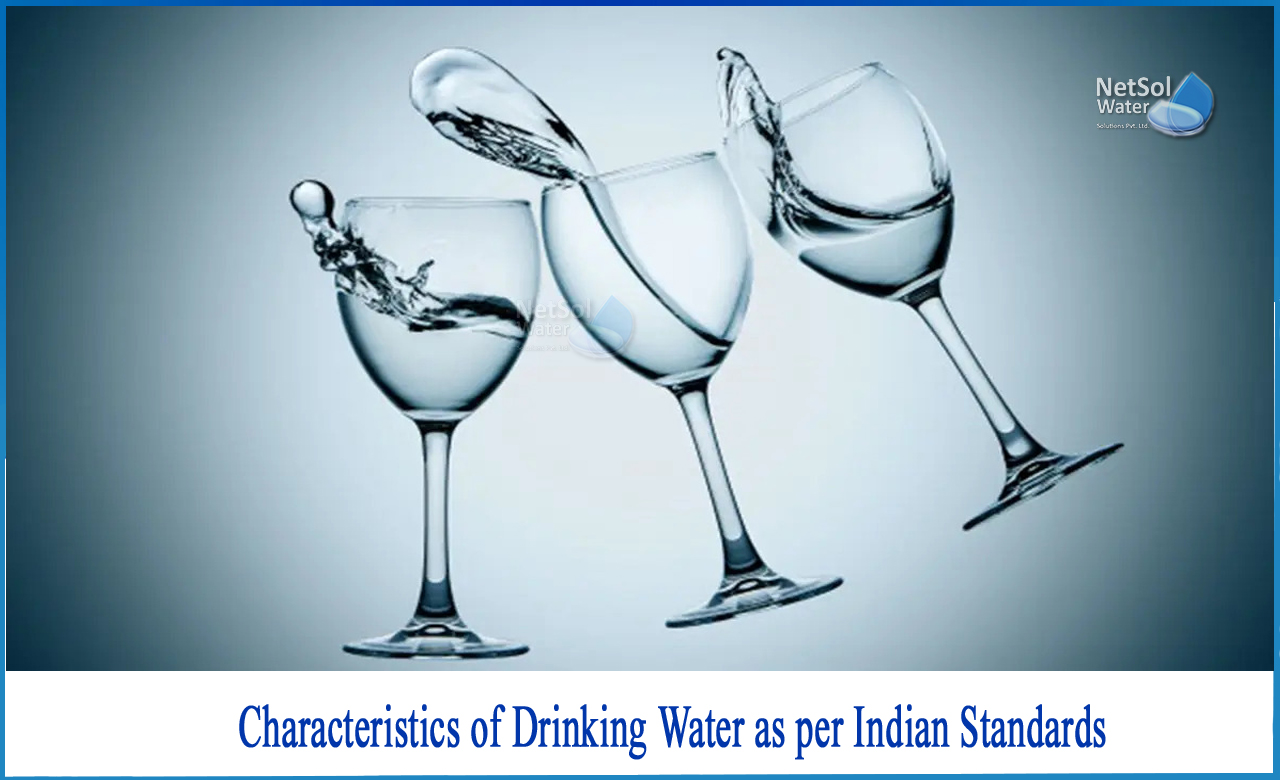What are Characteristics of Drinking Water as per Indian Standards?
After air, water is the second most vital requirement for life to exist!
As a result, water quality has received a lot of attention in the scientific community. "It is the physical, chemical, and biological qualities of water," says the most common definition of water quality.Although scientific measures are used to describe water quality, declaring "that water is excellent" or "that water is terrible" is not an easy task.
The decision is usually based on the water's intended use.The physical, chemical, and microbial qualities of water influence its quality. Thus, the quality of natural water sources utilized for various purposes should be determined in terms of the precise water-quality criteria that have the greatest impact on the water's potential usage.
Drinking water can come from any source and is meant for human consumption for drinking and cooking. It covers all water for human consumption, whether treated or untreated.
TheBureau of Indian Requirements established IS 10500: 2012 as the quality standards for drinking water in India.
A: Physical characteristics of drinking water
1: Turbidity
A turbidity rod or a turbidity meter with optical observations is used to measure turbidity, which is expressed as the quantity of suspended particles in mg/l or parts per million (ppm).
The use of a turbidity rod to measure turbidity in the field is common. To test the turbidity of water in the laboratory, many turbiditimeters are used, the most frequent of which are the Jackson and Baylis turbiditimeters. The maximum turbidity allowed in drinking water is 5 to 10 parts per million.
2: Temperature
The temperature isn't utilized to determine whether or not water is drinkable. Temperature, on the other hand, is a crucial physical component that impacts water quality in natural water systems such as lakes and rivers. A temperature of 10°C is regarded acceptable for drinkable water, whereas a temperature of 25°C is deemed objectionable.
3: Color
Colorless water indicates purity; colorful water indicates contamination. Color in water gives it an unappealing aspect.
The colour generated by one milligram of platinum cobalt in one liter of distilled water is the unit of color on the cobalt scale. In the laboratory, a slide with conventional numbers is kept available. The number on the cobalt scale for public water supply should not exceed 20 and better be less than 10.
4: Taste and Odour
Odour intensity, which is connected to the threshold odour or threshold odour number, is used to describe the amount of taste or odour present in a certain sample of water. The water in public sources should be typically odor-free, i.e. the threshold number should be 1 and never exceed 3.
B: Chemical characteristics of drinking water
1: Total solids
The quantities of dissolved and suspended matter in water are assessed separately in this test, then put together to produce the total quantity of solids in water. The maximum allowable level of total solids is 1500 mg/lt, with 500 mg/lt being the highest desired level.
2: pH value of water
Permissible pH value for public supplies may range between 6.6 - 8.4. The lower value of pH may cause incrustation, sediment deposits, and difficulty in chlorination.
3: Chloride content
The chloride concentration of water intended for consumption shall not exceed 250 parts per million.
4: Dissolved oxygen or DO
The amount of free, non-compound oxygen contained in water or other liquids is referred to as DO. Because of its impact on the creatures that live in a body of water, it is an important metric in determining water quality. It is possible to calculate the amount of oxygen ingested. This level should be around 5 to 10 ppm for drinkable water.
5: Hardness
The water is quite soft, with a hardness of around 5, and excessively soft water is tasteless. The hardness should preferably be more than 5 but less than 8 for potable water.
6: BOD
The quantity of oxygen required by bacteria during the degradation of organic material is known as the Biological Oxygen Demand (BOD). Natural waterways should have a BOD of 5 mg/L or less to be considered unpolluted. BOD values in raw sewage can range from 150 to 300 mg/L. A low BOD implies that the water is of excellent quality, whereas a high BOD shows that the water is contaminated.
7: COD
Chemical oxygen demand (COD) and biological oxygen demand (BOD) are both used to calculate the quantity of organic molecules in water. COD readings are usually higher than BOD values.
C: Biological characteristics of drinking water
1: Indicator organisms
Coliform bacteria are a kind of bacterium that is used as a biological indicator of water and pollution. Escherichia coli, or E. coli, is a kind of coliform found in residential sewage.
2: Bacteria
Bacteria are single-celled creatures with no distinct nucleus and no green material to assist in the production of their own sustenance. For good potable water, total count of bacteria should be between 0 to 100.
What can we offer?
Netsol Water is one of India's major water and wastewater management company, specialized in the design, manufacture, and delivery of custom-made treatment systems, industrial machinery, and luxury amenities for the water industry.
Netsol Water is Greater Noida-based leading water & wastewater treatment plant manufacturer. We are industry's most demanding company based on client review and work quality. We are known as best commercial RO plant manufacturers, industrial RO plant manufacturer, sewage treatment plant manufacturer, Water Softener Plant Manufacturers and effluent treatment plant manufacturers. Apart from this 24x7 customer support is our USP. Call on +91-9650608473, or write us at enquiry@netsolwater.com for any support, inquiry or product-purchase related query.



